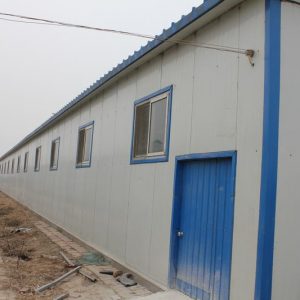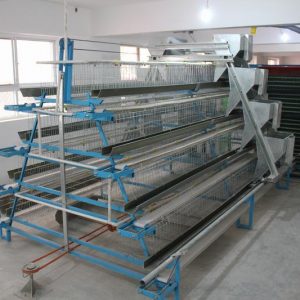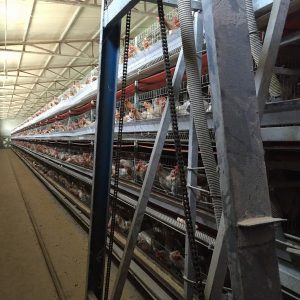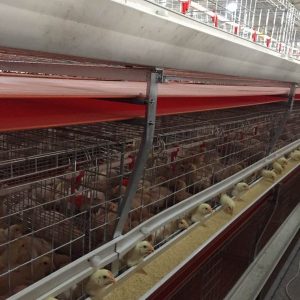
Feeding management of colorful pheasant breeding technology
The colorful pheasant, commonly known as the pheasant, was introduced to my country from the United States. Its feathers are gorgeous, colorful, and its tail feathers are very beautiful. The colorful pheasant has the characteristics of fast growth, strong disease resistance, wide adaptability, high survival and slaughter rate, simple feeding and management, and high market price, fresh meat, suitable for various consumption levels. Raising colorful pheasants is a short, flat and fast efficient breeding project, which is a good way for farmers to increase their income.
One, chicken breeding technology
The division of pheasant feeding stage: 0-6 weeks old is the brooding stage, 7-12 weeks old is the rearing stage.
(1) Drink water and start food at the right time: The young pheasants start to eat 24 to 36 hours after they are out of their shells. Drink water before starting. It is best to add 5% glucose or 0.1% potassium permanganate to the drinking water. For those who don’t know how to drink. Adjust in time to drink water as soon as possible, and start eating 1 to 2 hours after feeding. The starter should be soft, good palatability, rich in nutrients and easy to digest. It is best to feed the wet mix for the first 3 to 5 days. Remove the remaining material before each addition. Introducing food every 2 to 3 hours when starting the food, gradually increase the interval time, feeding 6 times a day for 0 to 2 weeks, and 5 times a day for 3 to 4 weeks. Generally, as the age increases, the feed intake also increases. When it grows close to the adult weight, the feed requirement tends to stabilize.
(2) Temperature and humidity control: The suitable brooding temperature is 35~34℃ for 1-3 days, 33~32℃ for 4~7 days, 31~28℃ for 2 weeks, 27~24℃ for 3 weeks, 4 Weekly age is 23~22℃, keep normal temperature after 5 weeks of age. The relative humidity is 65%~70% for 1-10 days and 55%~65% after 11 days.
(3) Density: As the age changes, its weight and water requirements will also change accordingly. The feeding density should be adjusted in time to increase the number of water and food tanks. The density when raising chicks in cages or box brooding is: 1~10 days old 50~60 birds/square meter, 10~20 days old 30~40 birds/square meter, after which they can be transferred into three-dimensional cages (4 for egg pheasants brooding Layer cage), 21 to 42 days old 20-30 per square meter, 43 to 60 days old 10-20 per square meter.
(4) Ventilation and indoor environment control: Poor indoor air circulation and excessive ammonia concentration will directly affect the growth and development of pheasants, and can induce chronic respiratory diseases, eye diseases and other diseases. Frequent ventilation should be used to keep the indoor air fresh, clean the manure in time, sweep the ground, maintain a suitable temperature, bring chickens for disinfection regularly, and evacuate the density in time. Improving the indoor environment is one of the important measures to improve the survival rate of young pheasants.
(5) Light time control: The young pheasants have less strict requirements for light. The young pheasants maintain 24 hours of light for 1 to 3 days, and 20 to 22 hours of light for 4 to 7 days. After that, they will quickly turn to nature according to the feeding situation of the young pheasants. illumination. When transferring to the three-dimensional cage around 3 weeks, the first night should be full of light to make the young pheasants adapt to the new environment as soon as possible. It is advisable to use 3 watts/m² more. After most of the pheasants eat and drink, you can Use natural light.
6) Immunization: Develop an immunization program based on the situation in the field.
2. Adult chicken breeding technology
The young pheasants can be raised in a cage for 6 to 7 weeks and then transferred to the ground level or transferred to a breeding pheasant cage. The period of time to 18 weeks of age is the fastest growth and development stage for pheasants, with an average daily gain of 10 to 15 grams. By 20 weeks of age, it is basically close to the weight of an adult pheasant. Therefore, feeding management and feeding at the age of 6-20 weeks is the key to ensuring the growth and development of the bred pheasants. While doing various daily management tasks, the following points should also be noted:
(1) Time for group transfer and attention issues: Generally, the chicks hatched from the end of March to mid-April are transferred to the group when they are raised to 6-8 weeks of age, and the chicks hatched in summer can be transferred to the group when they are raised to 5-6 weeks of age. Three days before the transfer, a special person should be assigned to be on night shift and be given 24-hour light. When transferring groups, attention should be paid to separate and rearing weak chicks and eliminate sick chicks in time. One to two weeks after turning to the ground, choose warm and windless weather, open the doors and windows, and let them go to the indoor and outdoor sports grounds for short-term activities, and then gradually extend them into the room at night.
(2) Restricted feeding of reserve breeding pheasants: Determine the breeding pheasants reserved for breeding. In addition to the preliminary selection at the age of 6-8 weeks, the weight must be controlled to prevent over-fat, so as to ensure a higher egg production rate during the breeding period. And fertilization rate. The specific measures are: reduce the protein and energy content in the diet; increase the amount of crude fiber and green feed; reduce the number of feedings; increase the amount of exercise; limit the amount of feed.
(3) The second beak cut off, the occurrence of anti-pecking addiction: Pheasants are more wild and like to peck foreign objects. Breeding pheasants grow rapidly. If certain nutrients are lacking, the environment is not ideal, or the density is too high during this period, pecking will be more likely to occur. In order to effectively prevent pecking, a second beak cutting can be performed between 5 to 10 weeks of age. The method is the same as that of domestic chickens.
(4) Prohibition of moldy and deteriorating feed to prevent aspergillosis: Pheasants in the early stage of breeding are susceptible to Aspergillus, and the disease has a high incidence and mortality. Therefore, care should be taken to prohibit moldy and deteriorating feed and moldy bedding in feeding management. , Control the environment in the house, maintain the required humidity, often use peracetic acid and other chickens for disinfection, use a flamethrower to burn the ground and burnable appliances before transferring to the group to prevent the occurrence of this disease.
3. Breeder breeding technology
The breeding of pheasants is seasonal. The breeding season is from March to July every year in the north, and may be 1 to 1.5 months earlier in the south. Generally, adult pheasants are divided into two stages: breeding period and rest period, and adopt different management.
Feeding management points during the breeding period:
①Pheasants entering the breeding period require rich nutrition, especially adequate supply of animal protein feed. After the egg production begins, the protein content is gradually increased with the increase of egg production. The crude protein content in the feed during the peak period of egg production can reach 18%-20%. While the protein content increases, attention should be paid to the appropriate increase of multiple vitamins. And the content of trace elements.
②The pheasant has a short domestication time and strong wildness. Both male and female pheasants have the bad habit of pecking eggs. Female pheasants have the characteristics of non-fixed egg-laying locations and high egg-breaking rate. Therefore, it is necessary to collect eggs frequently. Eggs or leftover eggshells should be cleaned out of the circle in time to prevent the spread of egg pecking.
③Maintain good and stable environmental conditions, and achieve the “three determinations” that is to determine the personnel, timing, and management procedures. Move in and out of the pheasant house lightly to check and repair the net room frequently to prevent wild animals from frightening and harassing the pheasant flock; in the hot weather in summer, build a shed or plant creeper loofah, beans and other plants to shade the net house. Avoid direct sunlight to ensure normal sexual activities and mating frequency of the species.
④The laying time of breeding pheasants is mostly concentrated from 10 am to 3 pm, which accounts for about 86.7% of the total number of eggs laid in the whole day. The normal laying time per egg lasts 0.5 to 5 minutes, and the primiparous pheasants have occasional dystocia. Breeders should pay attention to the dynamics of the pheasant flock, and should promptly assist in delivery if found to be difficult to give birth. The method is: first drip lubricant, glycerin, etc. into the cloaca, then fix both sides of the egg with the left hand, press the abdomen with the right hand and push forward to help take out the egg. The action should be light. This task requires two people to complete. Due to the blood in the cloaca of the primiparous female pheasants, other pheasants will peck the anus after seeing the red. Therefore, it is necessary to observe the pheasant group at any time and take timely measures to apply purple potion or black ink to the bleeding area, or keep it in isolation.
⑤ All the eggs that day should be delivered to the egg bank for storage on time.



